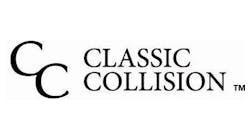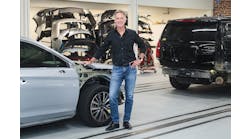Say it’s a busy time for one of your body shop locations and a slow time for the other location. Guess what? You can distribute some of the busy work to the location that’s slower.
But, wait.
In order to load-level, or move jobs around based on car count capacity, you need to have the proper systems in place.
As an MSO or body shop with just one location, load-leveling the work can be very beneficial. It balances out the work. Not only does it relieve some of the pressure from your team, opening a satellite location where cars are simply delivered and picked-up at, can open an opportunity to upsell to the customer, says Greg Downer, general manager at Referral Collision in Shakopee, Minn.
“It’s surprising how much work can be sold when the staff takes time to ask,” Downer says.
After one year in business, the team at Referral Collision, decided to look for another location that was bigger in square footage and could accommodate more work. The team found another facility but decided to keep the original location and create a satellite location for customers.
“It was born out of opportunity and then we realized we had this other facility that we could now use to create another avenue of sales,” Downer says.
A satellite shop is a chance for a body shop to deliver a car in a well-lit, heated and comfortable space. Essentially, the shop operator can sell the car back to the customer during this time.
The Backstory
The owners of Referral Collision, Jesse and Cathy Ruhmann, opened their first body shop location in 2015. The facility consisted of a customer service area and a shop floor of about 5,000 square feet. The building also had 1,000 square feet of office space and 4,000 square feet of production space. In total, the team was working out of an 8,000 square foot building.
Yet, within one year the team was quickly working on more cars and needed more production space.
A new body shop location opened up for sale and the team jumped at the chance to move production to the new, 16,000 square-foot facility, Downer says. The team saw the opportunity as a way to ease the customer concerns and not have them see as many damaged vehicles sitting in a lot.
The Problem
Downer says that while opening the production-only facility a block down from the shop’s original location helped the team revamp its customer service game, there was one obstacle while making the transition: communication.
“Communication is by far the biggest hurdle,” Downer says.
In order to get a call center to run smoothly, a body shop team has to be communicating properly, Downer says.
A new call sateelite location is separate from the production facility and thus, two teams are divided when it comes to information.
Downer realized he needed his staff member that was taking down the customer information during intake of the vehicle, to properly relay all of that information when the car arrived at the production shop.
The Solution
Downer and his staff at the satellite shop have created a check-in sheet in order to keep track of the customer’s information.
When the customer drops off a car, the employee will walk around the car with the customer to assess the damage and capture the damaged work, unrelated damage and any upsell items on the car.
Then, the physical document is placed into the customer and car’s folder and taken with the car to the production facility.
To go a further step, Downer’s team will take the check-in sheet, make a photocopy and hang the photocopy on a window sticker in the customer’s car so it sticks to the window.
To eliminate any other communication concerns that arise, the team has an open communication policy. The staff at the satellite facility will email, text or call with any customer information depending on the urgency of the information and vice versa. The phone lines are linked between the two locations, Downer says.
“Even if the front office is with customers at the original facility, we can pick up the call in the back end here as well,” he says.
The Takeaway
“If you can get a communication process down correctly, then you can make sure the hub and spoke of the body shops are working in tandem,” Downer says.
To keep cost and processes even more streamlined, Downer has an employee that will do all the car washing, detailing, buffing and act as the porter between the two facilities.
How to Set Up a Satellite Location
Greg Downer, general manager for Referral Collision in Shakopee, Minn., shares how any body shop owner can build an efficient call center.
Step 1: Stay within a certain mile radius of the original facility.
Downer recommends finding a satellite center building within a 10-mile radius of the original body shop. Even if the center is close to the body shop, it allows the body shop to pull customers from another 10-mile radius surrounding its location and that will increase the marketing area for the business.
Step 2: Find a smaller facility, if possible.
Find a location that is small so that the overhead cost remains small. Downer says to look for about 4,000 to 5,000 square feet in a building. The building should be able to hold one bay for delivery and pickup and an office space.
Step 3: Try not to hire on a lot of staff.
A satellite shop only needs to be staffed with about two to three people, Downer says. There should be someone at the front office who can work the phones and then someone who can interact and walk-around the car with the customer.
Step 4: Keep asking about more services.
Simply ask the customer if they’d like to add on a service, Downer says. His team offers additional premium detail packages and a window tint service. If the customer is getting front bumper work done for example, Downer says to offer a service like a protectant coat. For every 10 customers that come into the shop, one customer will accept an additional service.
SHOP STATS: Referral Collision Location: Shakopee, Minn. Operator: Jesse and Cathy Ruhmann and Last Name Average Monthly Car Count: 95-110 depending on heavy hits Staff Size: 12 (2 owners, 1 front office, 2 at call center, 1 parts manager, 6 back-end technicians) Shop Size: 8,000 square feet (call center) Annual Revenue: $2.5 million

